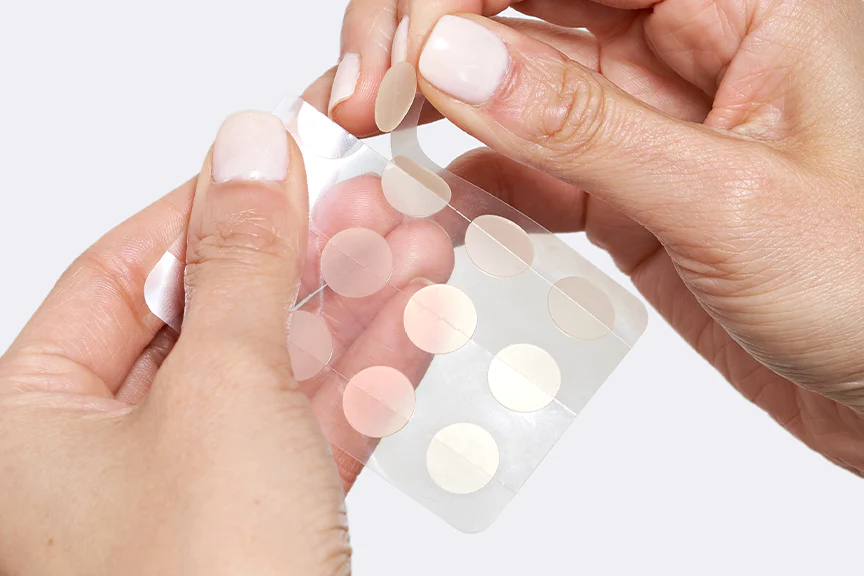Acne is a widespread skin condition that affects millions of individuals globally, often leading to not only physical discomfort but also emotional distress. The traditional methods of acne treatment—such as topical creams, oral medications, and extensive skincare routines—can be daunting and ineffective for many. the emergence of anti-acne dermal patches has begun to break down these barriers, offering a simpler, more effective approach to acne management. This article explores how anti-acne dermal patches are changing the landscape of acne treatment and empowering users to take control of their skin health.
Understanding Anti-Acne Dermal Patches
Anti-acne dermal patches are adhesive patches designed to target and treat individual blemishes directly on the skin. Typically made from hydrocolloid materials, these patches contain active ingredients like salicylic acid, benzoyl peroxide, and natural extracts such as tea tree oil. The patches work by absorbing excess oil and pus while providing a protective barrier, which helps reduce inflammation and promotes faster healing.
Key Benefits
-
Targeted Treatment: Patches allow users to focus on specific blemishes without affecting the surrounding skin, reducing irritation and side effects.
-
Ease of Use: With a simple application process, anti-acne patches can be seamlessly incorporated into any skincare routine, making them accessible to people of all ages.
-
Quick Results: Many users experience visible improvements within a few hours, making these patches an appealing option for urgent acne management.
Breaking Down Barriers
1. Accessibility and Convenience
One of the primary barriers in acne management has been the complexity of traditional treatments. Anti-acne patches simplify the process, offering a convenient solution that requires minimal effort. Users can apply a patch and go about their day or sleep without worrying about a complicated skincare routine. This ease of use has made them particularly popular among busy individuals and teenagers.
2. Reducing Stigma
Acne often carries a stigma, leading many to feel self-conscious about their skin. The discreet nature of dermal patches allows users to treat their blemishes without drawing attention to them. The transparency of many patches means they can be worn during the day, fostering a sense of confidence and encouraging users to embrace their skincare journey without fear of judgment.
3. Empowerment Through Education
As awareness of skincare ingredients grows, consumers are becoming more knowledgeable about their choices. Many brands take an educational approach, informing users about the ingredients in their patches and how they work. This empowerment allows individuals to make informed decisions about their skincare, helping to demystify acne management.
4. Innovative Formulations
Advancements in formulations have made anti-acne patches more effective than ever. Many brands are incorporating new technologies, such as microdart technology, which allows active ingredients to penetrate deeper into the skin. These innovations not only enhance effectiveness but also provide users with confidence in their chosen treatment.
5. Community Support
Social media platforms have created spaces for individuals to share their skincare experiences and connect with others facing similar challenges. Many users share their success stories with anti-acne patches, building a supportive community that encourages others to try these solutions. This sense of camaraderie can help alleviate feelings of isolation often associated with acne.
Market Trends Driving Growth
The anti-acne dermal patch market is experiencing significant growth, driven by several trends:
1. Increasing Consumer Demand
The rise in skincare awareness and the quest for effective acne solutions have fueled demand for anti-acne patches. As consumers look for targeted and efficient options, these patches have become a favored choice in the skincare aisle.
2. The Influence of E-commerce
The growth of online shopping has made it easier for consumers to access a variety of anti-acne products. E-commerce platforms allow brands to reach broader audiences, while user reviews and testimonials help build trust and encourage purchases.
3. Sustainability Initiatives
With increasing awareness of environmental issues, many brands are shifting towards sustainable practices. Eco-friendly packaging and biodegradable materials are becoming more common in the anti-acne patch market, appealing to environmentally conscious consumers.
Challenges Ahead
Despite their growth, the anti-acne dermal patch market faces challenges. The abundance of options can lead to consumer confusion, making it essential for brands to clearly communicate their unique benefits. Additionally, skepticism regarding the efficacy of patches compared to traditional treatments persists among some consumers.



